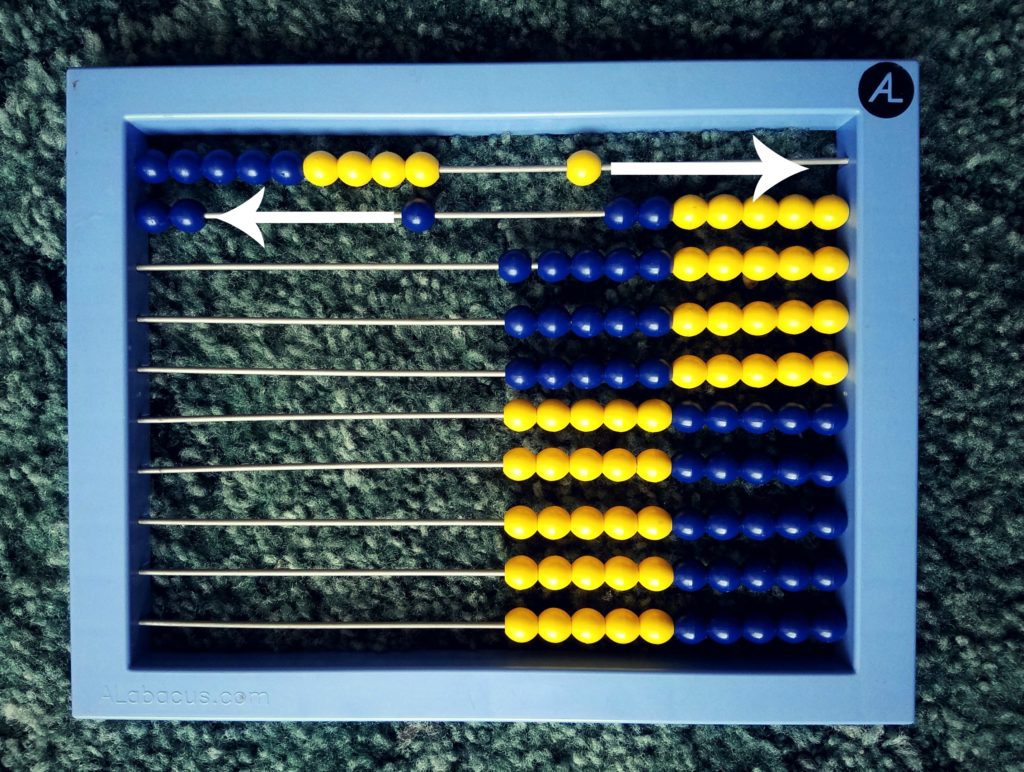When the children were younger we would get season passes to Six Flags Over Texas. Going to an amusement park with six children can be pretty exciting and a tad stressful.
Because there is a twelve year age difference between the oldest and youngest, we found it easier to divide up into two groups to conquer the park. The older or more daring children would go with Dad and the younger or less daring would go with me. Then we’d meet up on rides we all liked to ride. On our way out of the park we always stop for funnel cakes. Two funnel cakes worked well to divide among our crew. It was a sweet ending to a fun day!
This week’s game, Find the Quotients, game D1 in the Math Card Games book, is about dividing. We recommended to wait until the multiplication facts are mastered before starting division. But because this game is the first game in the division chapter, it means it’s the easiest division game. I think it’s also a great way for a child to get more practice on their multiplication.
Find the Quotients game is especially fun because you get to divide numbers on the AL Abacus. Grab the abacus and ask your child to enter the number twelve on it.

Ask the child how many 3s are in 12. The goal is to take away beads from 12 to see how many rows you can get of 3 beads. Start off by taking 1 bead away from the top row of 10 and enter it on the second row.

Then take away three more beads from the top row of 9 beads and at the same time enter three beads on the third row.

You are now left with six beads on the top row, so you can take away another set of three beads and enter another group of three beads on the fourth row.
Repeat the question: How many 3s are in 12? Your child should be able to see there are four groups of three in the quantity 12.

Than say 3 x what = 12, thereby reinforcing multiplication. Have the child answer 3 x 4 = 12.
Repeat this process with a few more examples. For a younger child who still needs work on their multiplication facts, this may be all you do for the game.
So back to the game. Find the Quotients game can be played independently or with two players. They will need a set of Basic Number Cards 1 to 10.
You will also pick out a set of multiples from the Multiplication Cards. If your child is a beginner or still learning their multiplication facts, you can pick out a set they need work on. We’re going to use 6s today. Make sure you shuffle them well.

Lay out the basic cards in a row leaving a space between 5 and 6 as shown here.

The goal of the game is to match all the multiples cards with a basic number card.
To start the game pick up the top card in the multiples deck. We picked the multiples of 6, so then we would have to figure out how many groups of 6s are in 30.

Encourage your child to use the AL abacus as needed. Even though children know the answer, they still find it fun to move the beads around on it.
It’s also great for every child to use the abacus to verify their answer. It’s especially helpful for those children who need the extra hands approach on multiplication to help them make connections.
Once the child finds how many groups of 6 are in 30, they lay their card above the correct basic number card.

If two people are playing then it’s the next person’s turn. Keep working to place the cards in the correct places.

When all the cards have been played the game is over!

This is a fun game that really helps a child to see the connection between multiplication and division. Comment below and let us know how much fun – and learning – that you’re having this summer!

I do not know if it’s just me or if perhaps everybody else encountering issues with your blog.
It appears like some of the text on your posts are running off the screen.
Can someone else please comment and let me know if
this is happening to them as well? This might be a
problem with my web browser because I’ve had this happen previously.
Cheers
Hi, Ona. I will check on this and see if we can’t get this fixed, if it is a problem.
Thanks!
Hi, Ona.
I wanted to let you know that after doing some research and testing, we have found that the website is showing all the text appropriately. You may want to check your browser settings and see if you can adjust the size of the text you are viewing. Many browsers (and your personal computer display settings) will give you the option to make the text larger or smaller based on your preference. You may want to check to see if you can make adjustments to see all the text on your screen.
I hope that helps! If you have any further questions or concerns, please do not hesitate to repost here or email RightStart Math directly at [email protected]
Have a great day!
Rachel